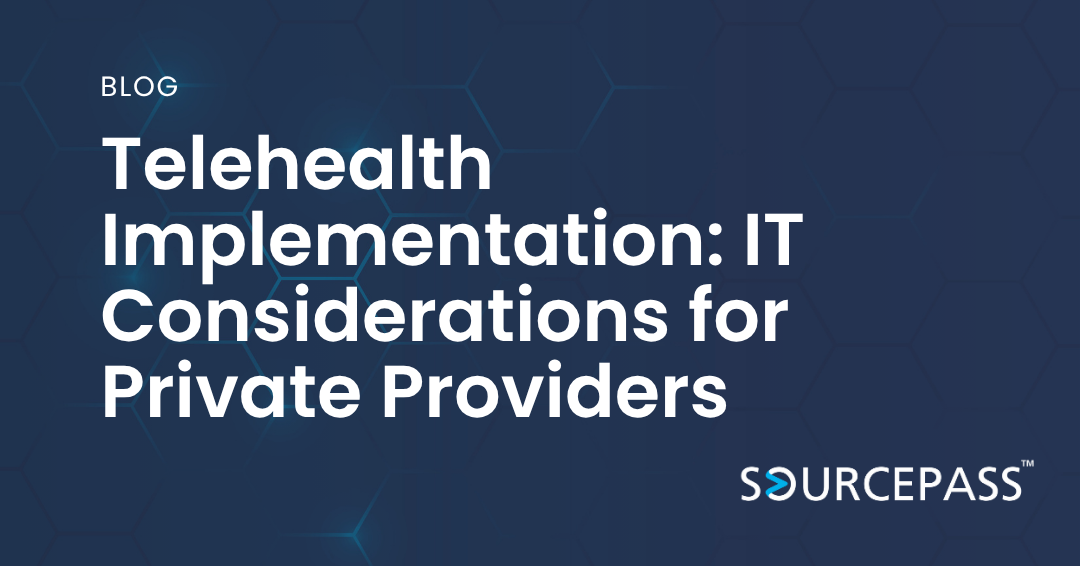Telehealth Implementation: IT Considerations for Private Providers
Jul 21, 2025 Alex Davis Industry - Healthcare | Strategy & Modernization 2 min read



Telehealth has quickly moved from a convenience to a necessity. For private practices, it offers an opportunity to expand access, improve patient satisfaction, and increase operational flexibility. But rolling out telehealth services isn’t as simple as adding a video platform—it requires the right IT infrastructure to ensure privacy, performance, and compliance.
This article outlines the critical IT considerations for successfully implementing private practice telehealth and delivering secure video visits that your patients can trust.
Why Telehealth Matters for Private Practices
Today’s patients expect care that fits into their lives, not the other way around. Telehealth helps private providers compete with larger systems by offering:
- Flexible scheduling for remote or follow-up visits
- Access for patients in rural or underserved areas
- Continuity of care during travel or illness
- Operational efficiency for administrative tasks and consults
To realize these benefits, however, you need an IT foundation that supports HIPAA-compliant telehealth, minimizes risk, and delivers a seamless experience.
5 Key IT Considerations for Private Practice Telehealth
1. Choose a HIPAA-Compliant Telehealth Platform
Not all video tools are created equal. Free conferencing apps may lack the encryption and safeguards required for protected health information (PHI). Your telehealth platform must offer:
- End-to-end encryption
- Access controls
- Business Associate Agreement (BAA)
- Secure data storage and audit logging
Popular HIPAA-compliant options include Doxy.me, Zoom for Healthcare, and specialized EHR-integrated platforms.
2. Optimize Your Network and Internet Bandwidth
A successful video visit requires stable, high-speed internet. Poor connections can lead to:
- Dropped calls
- Audio/video lags
- Frustrated patients and clinicians
Conduct a bandwidth assessment and consider upgrading internet services, adding redundancy, or optimizing Wi-Fi coverage in key office areas.
3. Secure Endpoints and Mobile Devices
Whether your team uses office desktops, laptops, or mobile tablets for telehealth, each device must be secured. Best practices include:
- Installing endpoint protection software
- Enforcing password and timeout policies
- Using mobile device management (MDM) for remote monitoring
- Restricting app access to authorized users only
This protects patient data and supports regulatory compliance, especially if providers work from multiple locations or home offices.
4. Update Your Telehealth Consent and Privacy Policies
HIPAA and state laws require clear documentation of how patient data is used, stored, and protected. Your telehealth policies should:
- Include specific language for video-based care
- Detail how visits are recorded (if applicable)
- Explain platform security features to patients
- Outline consent requirements
Working with a healthcare IT advisor can help ensure these documents meet evolving standards.
5. Train Staff and Test the Workflow
Successful telehealth adoption depends on confident users. Staff should be trained on:
- Scheduling and launching secure video visits
- Verifying patient identity
- Documenting the session in your EHR
- Troubleshooting common connectivity issues
Simulated test visits before going live can uncover and fix workflow gaps in your private practice telehealth setup.
The Role of IT Partners in Telehealth Rollout
A Managed Service Provider (MSP) or healthcare IT consultant can assist with:
- Choosing and configuring compliant telehealth tools
- Upgrading network infrastructure
- Managing security and backups
- Ensuring business continuity
By partnering with an IT expert, you can avoid common pitfalls, maintain compliance, and focus on delivering high-quality care.
Final Thoughts
Telehealth is here to stay, and private providers that invest in secure, scalable IT infrastructure will be positioned to thrive. From secure video visits to patient engagement tools and behind-the-scenes security measures, your technology choices shape the care experience.
Ready to launch or improve your telehealth services? Start with a readiness assessment to identify gaps and opportunities in your current IT setup.
Subscribe To
Sourcepass Insights
Sourcepass Insights
Stay in the loop and never miss out on the latest updates by subscribing to our newsletter today!
.png?width=500&height=100&name=White%20Logo%20-%20Transparent%20Tag%20(3).png)



